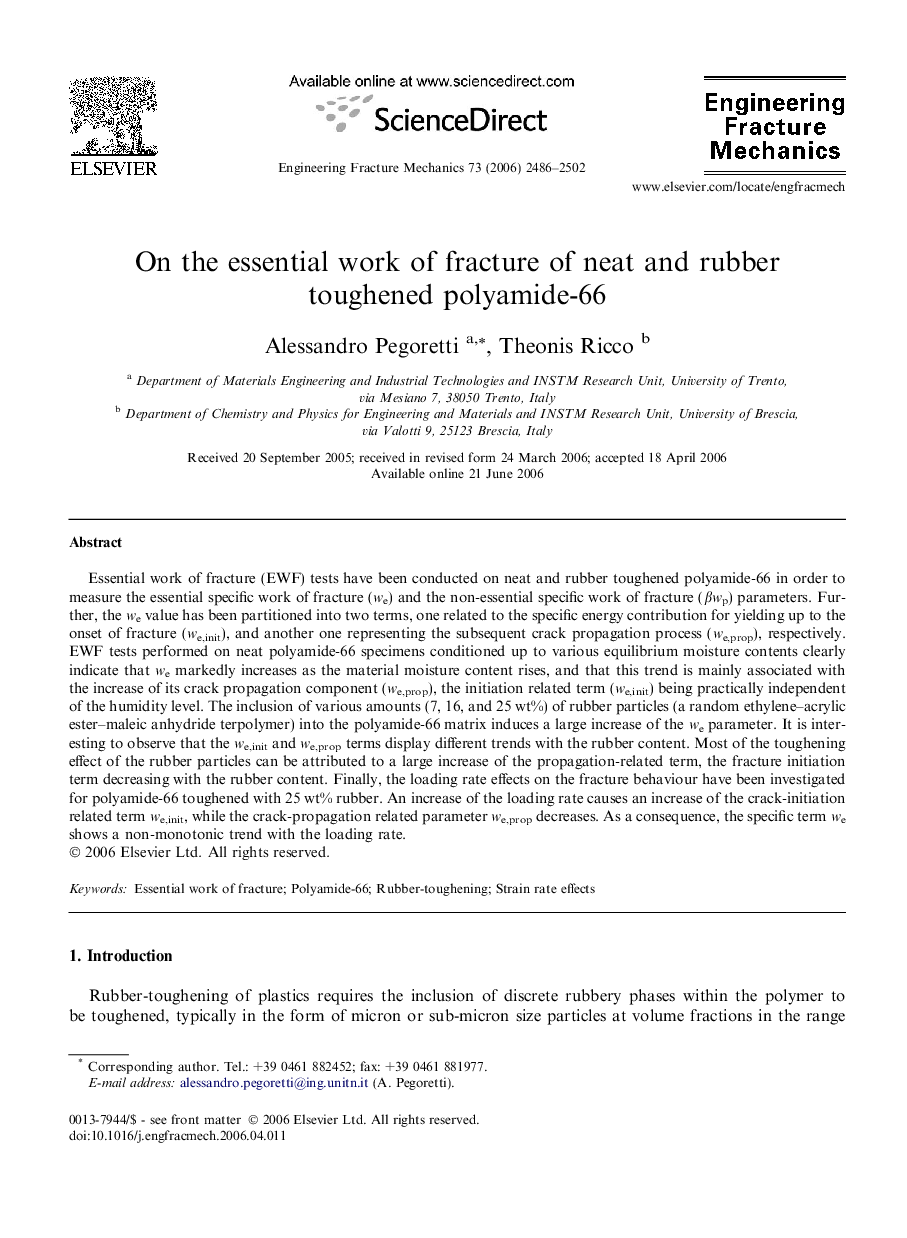| Article ID | Journal | Published Year | Pages | File Type |
|---|---|---|---|---|
| 768178 | Engineering Fracture Mechanics | 2006 | 17 Pages |
Essential work of fracture (EWF) tests have been conducted on neat and rubber toughened polyamide-66 in order to measure the essential specific work of fracture (we) and the non-essential specific work of fracture (βwp) parameters. Further, the we value has been partitioned into two terms, one related to the specific energy contribution for yielding up to the onset of fracture (we,init), and another one representing the subsequent crack propagation process (we,prop), respectively. EWF tests performed on neat polyamide-66 specimens conditioned up to various equilibrium moisture contents clearly indicate that we markedly increases as the material moisture content rises, and that this trend is mainly associated with the increase of its crack propagation component (we,prop), the initiation related term (we,init) being practically independent of the humidity level. The inclusion of various amounts (7, 16, and 25 wt%) of rubber particles (a random ethylene–acrylic ester–maleic anhydride terpolymer) into the polyamide-66 matrix induces a large increase of the we parameter. It is interesting to observe that the we,init and we,prop terms display different trends with the rubber content. Most of the toughening effect of the rubber particles can be attributed to a large increase of the propagation-related term, the fracture initiation term decreasing with the rubber content. Finally, the loading rate effects on the fracture behaviour have been investigated for polyamide-66 toughened with 25 wt% rubber. An increase of the loading rate causes an increase of the crack-initiation related term we,init, while the crack-propagation related parameter we,prop decreases. As a consequence, the specific term we shows a non-monotonic trend with the loading rate.
